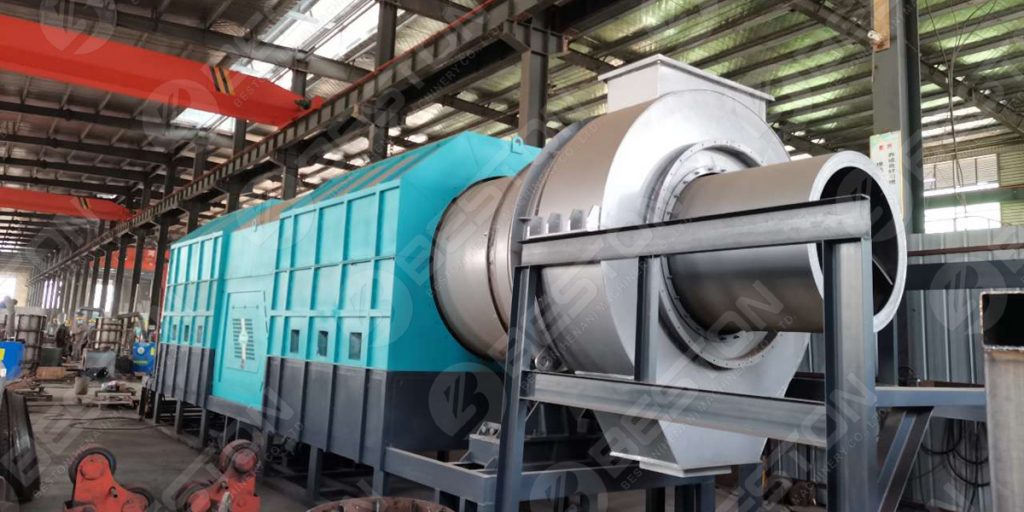Analysis of the Current Status and Future Trends of the Biochar Industry
The biochar industry has been growing rapidly as global attention increasingly focuses on sustainable solutions to waste management, soil improvement, and carbon sequestration. Biochar, a carbon-rich product obtained from the thermochemical conversion of biomass, offers both environmental and economic benefits. This article explores the present state of the biochar industry, its driving forces, key technology, and the future trends shaping the market.
Global Market Overview
The biochar market has seen exponential growth over the past decade. Increased awareness of environmental protection, sustainable agriculture, and renewable energy sources has led governments and corporations to invest heavily in biochar production. According to market analyses, the industry’s value is expected to surpass billions of dollars by 2030, driven by rising demand in agricultural, industrial, and energy sectors. For example, Beston Group, a charcoal making machine manufacturer in China, which provides comprehensive biochar production solutions worldwide.

Technological Innovations Driving Growth
Technology plays a central role in advancing biochar production efficiency. Modern machine manufacturer solutions now emphasize automation, emission control, and continuous operation to reduce energy consumption and environmental impact. The integration of smart controls and improved feedstock flexibility has made biochar systems more adaptable and profitable.
Among the most innovative technologies are continuous rice hull carbonizer units that transform agricultural residues such as rice husks into valuable biochar and energy. These systems not only minimize waste but also generate renewable heat and electricity for on-site operations. Such advancements are helping producers achieve both environmental sustainability and economic competitiveness.
Environmental Benefits and Applications
Biochar’s environmental benefits extend far beyond carbon storage. When applied to soil, it enhances nutrient retention, water-holding capacity, and microbial activity. This leads to improved crop yields and reduced fertilizer use. Additionally, biochar can capture heavy metals and pollutants, making it useful in environmental remediation and wastewater treatment.
In the energy sector, biochar acts as a solid fuel alternative and a key component in renewable energy projects. It also contributes to carbon credit trading by helping industries offset their greenhouse gas emissions. The versatility of biochar applications is one of the key reasons for its growing popularity among both small-scale farmers and large industrial players.
Challenges in the Biochar Industry
Despite its promising potential, the biochar industry still faces several challenges. The high initial cost of advanced production systems, such as automated carbonization machine setups, remains a barrier for many small producers. Moreover, regulatory inconsistencies and the lack of global standards for biochar quality have slowed down international trade and investment.
Education and awareness are also critical issues. Many farmers and policymakers still lack sufficient understanding of biochar’s long-term benefits. Continued research, demonstration projects, and government incentives are necessary to overcome these barriers and accelerate adoption worldwide.
Future Trends and Market Outlook
The future of the biochar industry looks promising, driven by advancements in technology, policy support, and environmental awareness. The global shift toward circular economies will further integrate biochar into sustainable waste management and agricultural systems. Companies like Beston Group are expected to lead innovation through the development of more efficient, low-emission production technologies and customized solutions for different biomass feedstocks.

Automation, digital monitoring, and AI-based optimization will continue to enhance production efficiency and cost-effectiveness. Furthermore, as carbon markets mature, biochar producers could gain significant financial benefits from carbon offset credits. This will encourage more investors to enter the market and accelerate the scaling of biochar production globally.
Conclusion
In conclusion, the biochar industry stands at the intersection of environmental responsibility and economic opportunity. With cutting-edge biochar pyrolysis technology and support from global leaders networks, the sector is poised for sustained growth. As the world continues to prioritize carbon reduction and resource efficiency, biochar will play a vital role in building a sustainable and resilient future.